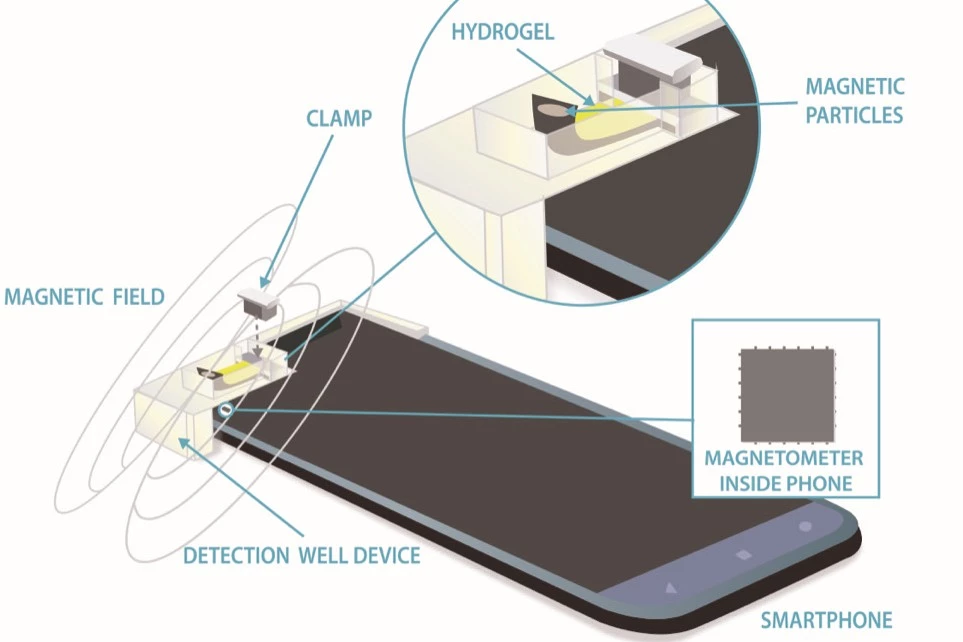The magnetometer in your smartphone helps you navigate by powering the device's digital compass. Now researchers have found a way to use it to navigate body chemistry by reading your glucose levels, potentially making managing diabetes a lot easier.
In a proof-of-concept study, scientists at the National Institute of Standards and Technology (NIST) at the U.S. Department of Commerce created a small capsule device and clamped it to a Motorola Moto E smartphone, a model that was released in 2020. The capsule contained two thin hydrogel sheets embedded with magnetic particles. Hydrogels are water-rich materials that have been used for everything from healing brain injuries to creating tiny shape-shifting robots.
The hydrogel sheets were designed to expand or contract at different rates based on the presence of glucose or based on the specific pH of a liquid.
They then used the phone's magnetometer to read the differences created by the two sheets as they moved their magnetic particles either closer or farther away from the phone. The result was a device that could measure glucose levels with astonishing accuracy.

The system was able to read concentrations of the sugar down to a few millionths of a mole, a measurement that's often applied to molecular structures. The researchers say that accuracy goes way beyond what is needed to detect glucose in a blood sample, but it could be of use in reading saliva for the sugar, which would mean diabetics could take daily glucose readings without having to deal with painful finger pricks.
The researchers also say that the device can go further in what it can analyze. In the current study, because it could also detect pH levels, the team says it could be used to test for a range of biological disorders marked by shifting pH levels in the body. Thanks to its high degree of accuracy, it could also measure histamines quickly and easily, potentially replacing a test that requires a 24-hour urine collection and detailed lab analysis.
"The team’s study suggests that a cellphone magnetometer can measure pH levels with the same sensitivity as a thousand-dollar benchtop meter but at a fraction of the cost," says NIST in a news release about the study. "A home-brewer or a baker could use the magnetometer to quickly test the pH of various liquids to perfect their craft, and an environmental scientist could measure the pH of ground water samples on-site with higher accuracy than a litmus test strip could provide."
NIST says that the device might also be used to detect environmental toxins.
Moving onward from this proof-of-concept study, the researchers say they'll need to figure out how to mass-produce the hydrogel test strips and find a way for them to remain stable and functional while being stored.
A paper describing the study has been published in the journal Nature Communications.
Source: NIST





